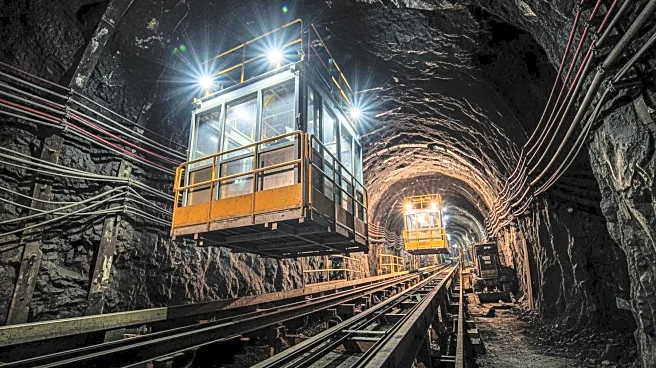What's Happening?
The Richards Bay and Saldanha Bay rail corridors in South Africa are undergoing a revival aimed at improving mining efficiency. A request for information on public sector participation was issued in May,
with private investment proposals expected soon. However, significant changes from private concessions may not be realized until 2029. The revival is crucial for the coal and iron-ore industries, which are vital to South Africa's export economy. Improved rail logistics are expected to enhance production capacity, reduce operational costs, and attract foreign investment.
Why It's Important?
The revitalization of these rail corridors is significant for South Africa's mining sector, which plays a critical role in the country's economy. By improving logistical operations, the corridors can increase the competitiveness of South African minerals on the global market. This initiative is expected to boost the GDP and create employment opportunities, contributing to economic growth. The involvement of private investment and public-private partnerships is essential for the success of these projects, highlighting the importance of collaboration between government and industry stakeholders.
What's Next?
The next steps involve issuing requests for proposals for private investment and engaging stakeholders in infrastructure rehabilitation efforts. The South African government and private sector must collaborate to ensure the success of these projects. The private sector's role will include setting up tariff models and participating in infrastructure investment agreements. The full operational access for private rail operators is pending further regulatory compliance and contract negotiations, with expectations to add significant freight capacity by 2026/27.
Beyond the Headlines
The revival of these rail corridors could lead to long-term shifts in South Africa's industrial landscape, promoting sustainable development and reducing reliance on road transport. The initiative also presents an opportunity to implement environmentally friendly practices in mining logistics, potentially setting a precedent for other regions. The success of this project could serve as a model for similar infrastructure improvements in other parts of the world.











